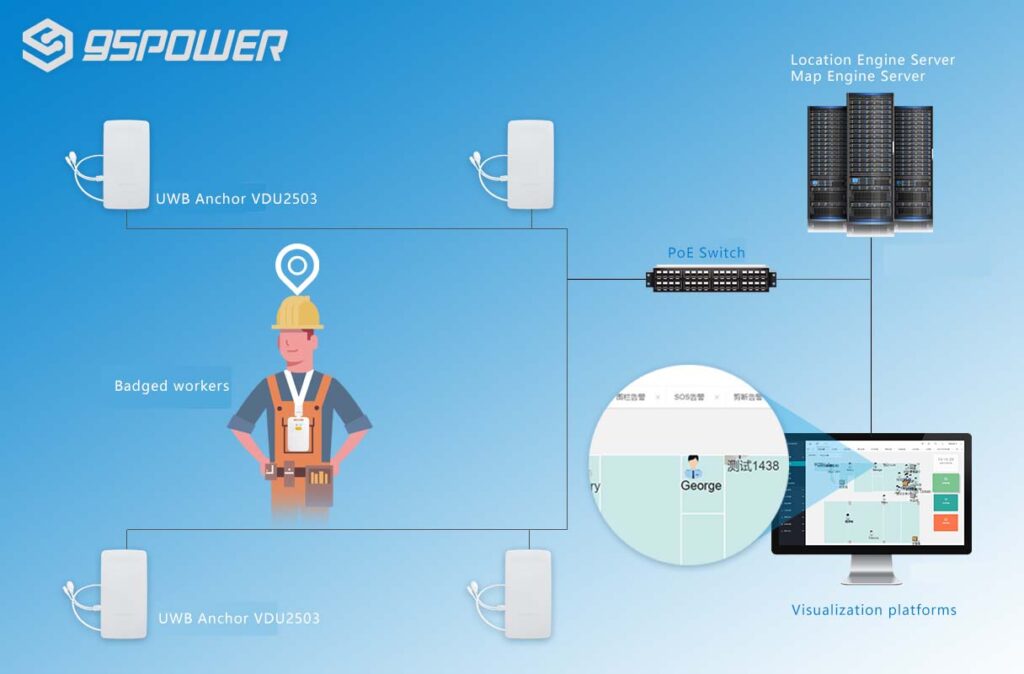Making Wireless IoT Project Easy, Smart, Secure.
GET A FREE SAMPLEIn the daily management of psychiatric hospitals, ensuring patient safety and enhancing nursing efficiency are of paramount importance. The introduction of personnel positioning technology, especially the application of Bluetooth positioning technology and UWB (Ultra-Wideband) positioning technology, is bringing revolutionary security guarantees and management upgrades to this field. These two technologies, with their respective advantages, provide strong support for building a safe and intelligent medical environment.

Precise positioning, strengthening the security defense line
The traditional management of psychiatric hospital staff relies on manual inspections and registration, which is inefficient and has security blind spots. The core value of Bluetooth and UWB positioning technologies lies in achieving real-time and precise positioning of hospital staff within the facility:
UWB Technology: With its extremely wide frequency bandwidth, UWB can provide extremely high positioning accuracy ranging from centimeters to decimeters. This means that medical staff can instantly determine the exact location of the patient. In emergency situations, such as when the patient suddenly becomes unwell or enters a restricted area, the system can immediately alert and guide personnel to quickly arrive, thus securing precious time for life-saving rescue efforts. Its strong anti-interference capability also ensures stable operation in complex indoor environments.
Bluetooth positioning technology (such as Bluetooth AOA/AOD): Based on low-power Bluetooth (BLE) beacons or positioning tags, by measuring signal arrival angles and other methods, it can also achieve good positioning accuracy (usually ranging from sub-meters to meters). Its advantages lie in the relatively low deployment cost and extremely low power consumption. The battery life of the device or bracelet can last for several months or even several years, making it highly suitable for widespread use by patients. The system can also provide reliable real-time location information.
Core function: Enhance management efficiency
Based on these two technologies, the positioning system can achieve the following key functions and significantly enhance the management level of psychiatric hospitals:
The balance between humanistic care and privacy protection
When applying positioning technology in psychiatric hospitals, great attention must be paid to ethics and privacy. An excellent design should achieve the following:
The application of Bluetooth positioning technology and UWB positioning technology has ushered in a new era of intelligence for the personnel safety management in psychiatric hospitals. They not only provide unprecedentedly accurate location information, build a solid security barrier, effectively prevent wandering and accidents, but also significantly reduce the workload of medical staff through intelligent management and optimize resource allocation. Under the strict adherence to ethical norms and full protection of patient privacy, this technology is a powerful tool for achieving the goal of "safe, efficient, and humanized" psychiatric care. Embracing the innovation of positioning technology is an inevitable choice for psychiatric hospitals to enhance their modern management level and create a safer treatment environment for patients.
Prev:The Ultimate Integration of 5G and Wi-Fi in Smart Home Networks
Next:From Lost to Located: IoT’s Role in Next-Gen Asset Tracking
Copyrights© Shenzhen Skylab Co.,LTD All Rights Reserved.

